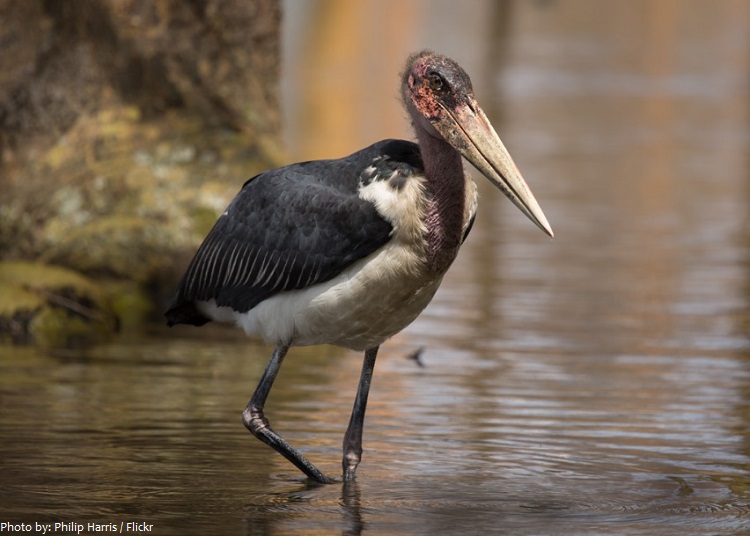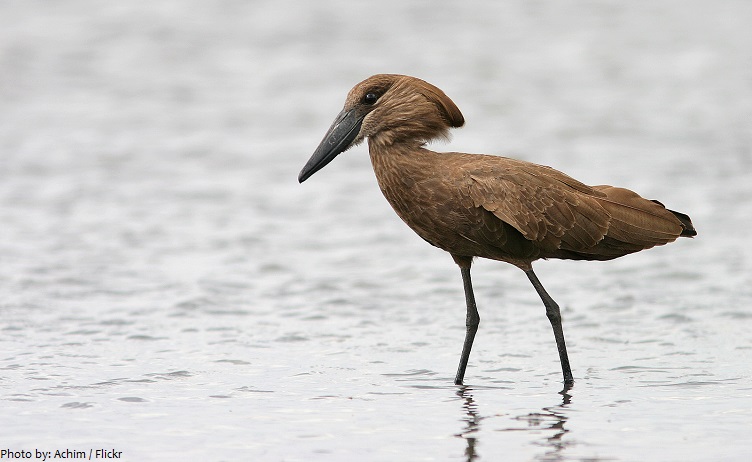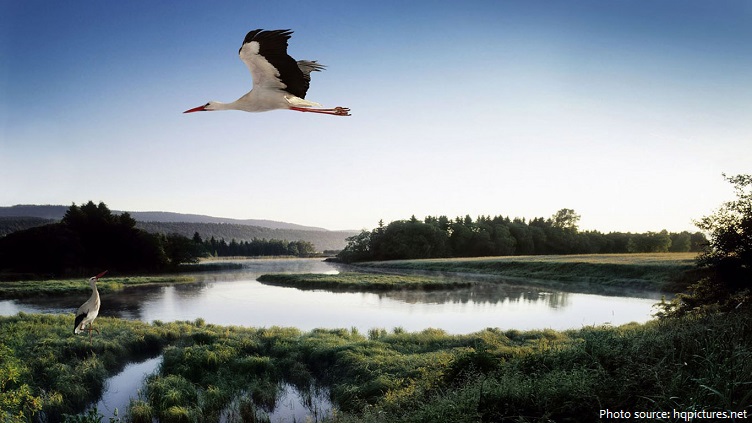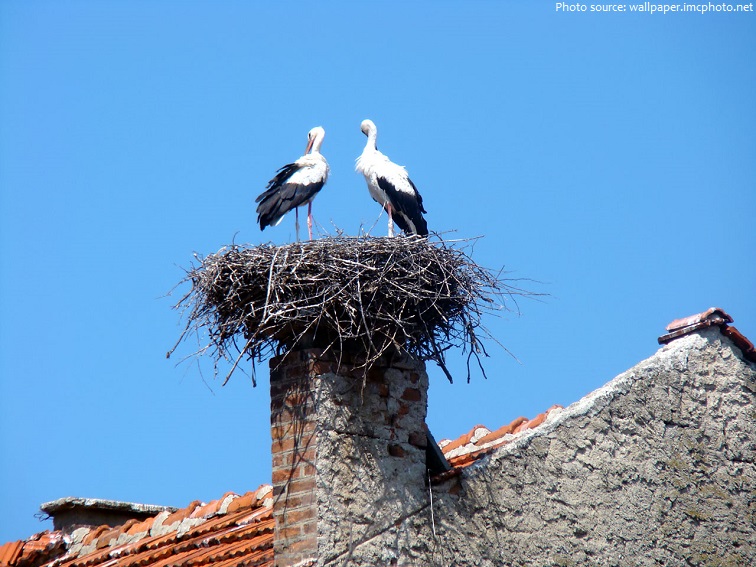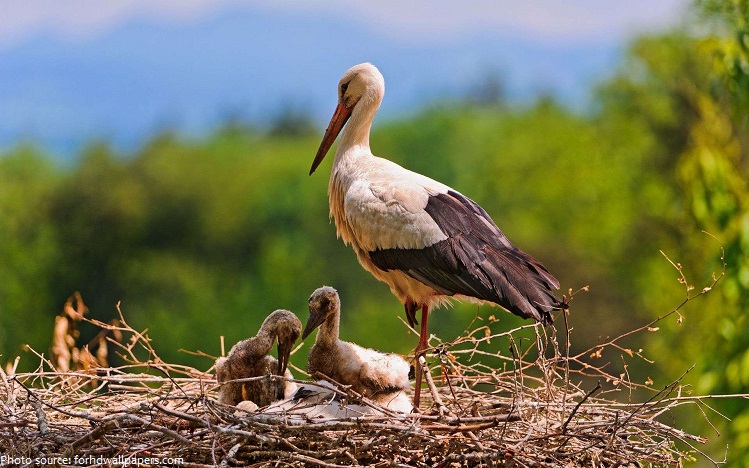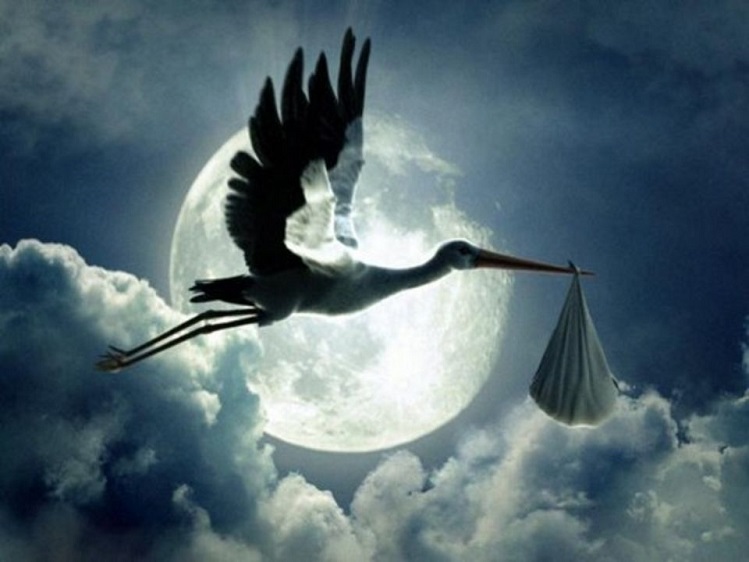Storks are large, long-legged, long-necked wading birds with long, stout bills.
They live on all continents except Antarctica and are most common in tropical regions.
Many species prefer to be in or near wetlands, though some occur in drier areas.
There are 19 species of stork.
The lifespan is about 30 years and sometimes up to 40 years.
The largest species of stork is the marabou stork, with a height of 152 centimeters (60 inches) and a weight of 9 kilograms (20 pounds). A wingspan of 3.7 meters (12 feet) was accepted by Fisher and Peterson, who ranked the species as having the largest wing-spread of any living bird.
The smallest stork is the hammerkop at 56 centimeters (22 inches) in length with a weight of 470 grams (17 ounces).
Some species are slate gray, while others sport white, red, and black.
Strikingly colored bills in various combinations of red, black, and yellow often complement these plumages.
Storks have a dignified appearance, standing graceful and tall or marching deliberately on slender legs. The legs vary in shades of black, gray, or orange.
Storks are very beautiful in flight. They fly mostly by soaring on warm air currents, with long, broad wings that only flap occasionally. They stretch their neck out and dangle their legs behind them as they fly, making them recognizable even from far away.
Most storks eat frogs, fish, shellfish, insects, earthworms, small birds and small mammals. Some storks are scavengers.
The stork is almost voiceless and largely silent, although it does communicate with brief hissing noises and, most importantly, bill-clattering.
Many stork species are migratory.
Various terms are used to refer to groups of storks, two frequently used ones being a muster of storks and a phalanx of storks.
Storks were once thought to be monogamous, but this is only true to a limited extent. They may change mates after migrations, and migrate without them.
When it comes to nesting, storks may be either colony nesters or solitary nesters. Colony nesters gather in large groups, from a few pairs to several thousand birds.
Depending on the species, nests can be found in trees, on buildings, among rocks, or on the ground.
Their nests are often very large and may be used for many years. Some nests have been known to grow to over two meters (six feet) in diameter and about three meters (ten feet) in depth.
Female lays between 2 and 5 eggs. Incubation period lasts 25 to 35 days.
When stork chicks hatch, they are almost naked, but they quickly develop a covering of fluffy down feathers. They are altricial and need their parents to care for them, so both parents are kept busy flying back and forth to bring them food. Chicks can eat up to 60% of their own body weight per day.
After about 3 or 4 weeks, the chicks start to stand up in the nest and flap their stubby wings. After a few
months, their flight feathers start to grow in, and they learn to fly. Even then, they are still dependent on their parents for food for several weeks before they start fending for themselves.
Like most families of aquatic birds, storks seem to have arisen in the Palaeogene, maybe 40–50 million years ago.
Birdlife International lists three species as Endangered (Oriental white stork, Storm’s stork, and greater adjutant) and two as Vulnerable (lesser adjutant and milky stork). The painted stork and the black necked stork are listed as Near Threatened. Many other species are suffering regional declines in the face of ever-increasing pressure for land for agriculture and building development.
Storks’ size, serial monogamy, and faithfulness to an established nesting site contribute to their prominence in mythology and culture.
The legend about storks bringing babies got started in Victorian times. When a child asked, “Where did I come from?”, the parents simply said “The stork brought you.” This tied in nicely with the fact that European white storks often nests on the roof and chimney of houses in the spring, a time when many babies are born. The bird became a symbol of fertility and is considered good luck.
In Ancient Egypt, it was associated with, and was the hieroglyph for, the Ba, or “soul“.
The Hebrew word for the white stork is chasidah (חסידה), meaning “merciful” or “kind“.
Greek and Roman mythology portray storks as models of parental devotion, and it was believed that they did not die of old age, but flew to islands and took the appearance of humans.
Ottomar Anschütz’s famous 1884 album of photographs of storks inspired the design of Otto Lilienthal’s experimental gliders of the late nineteenth century.
Storks are closely related to herons, spoonbills and ibises.

